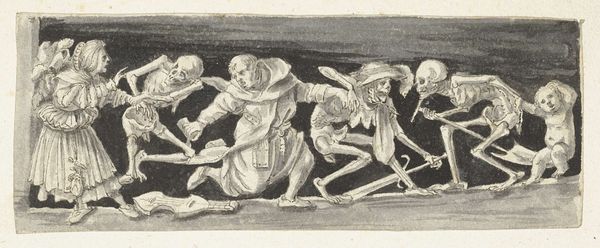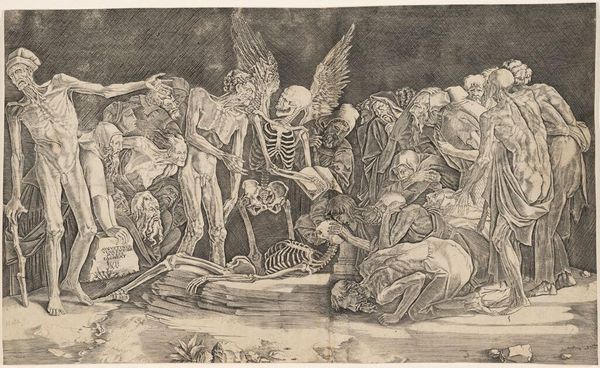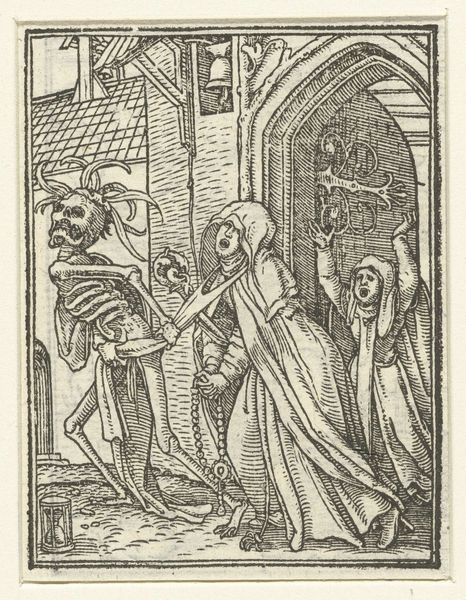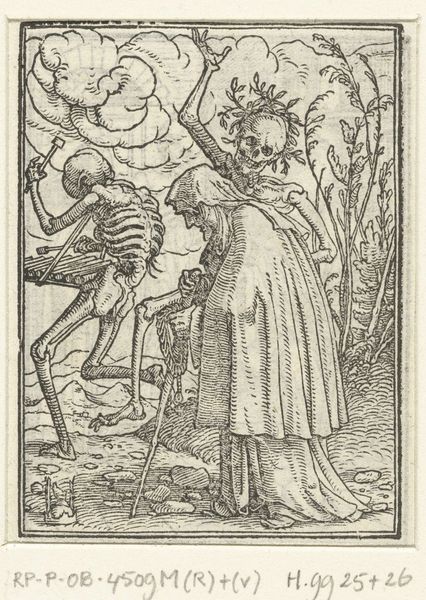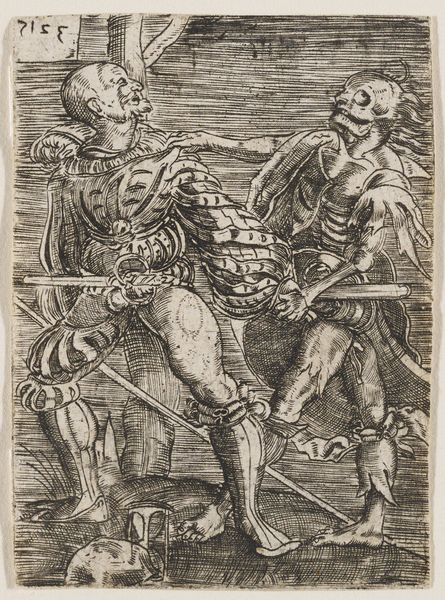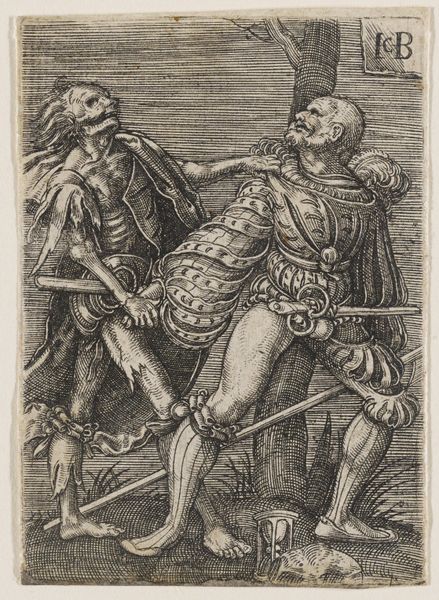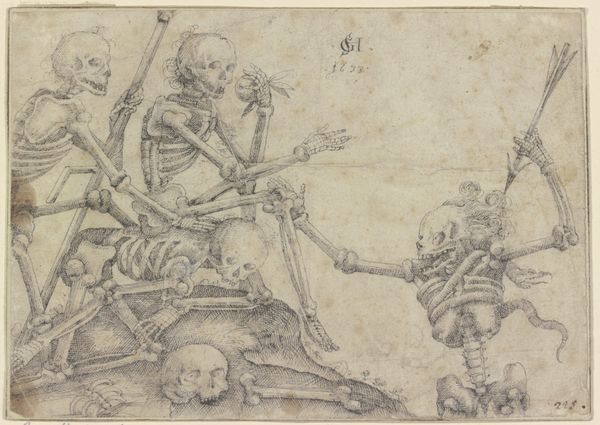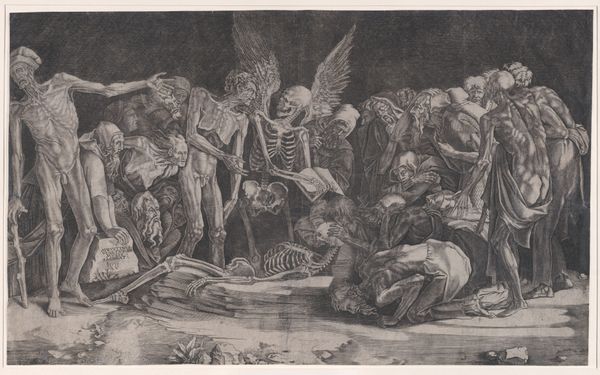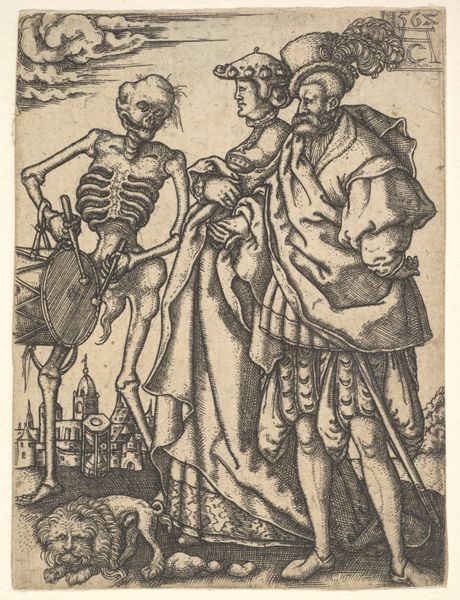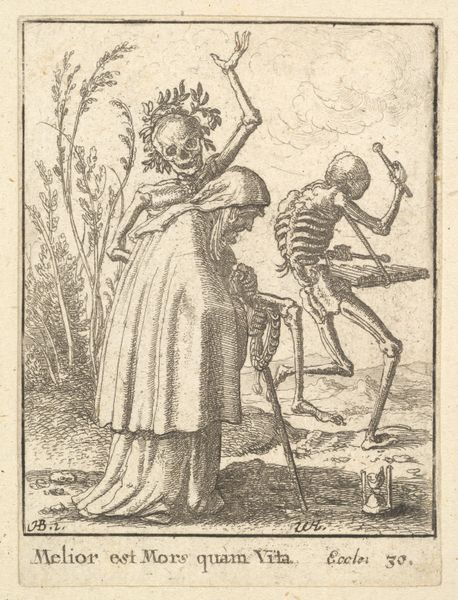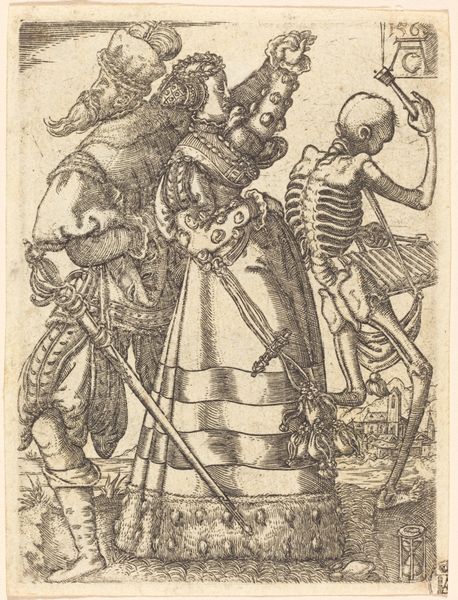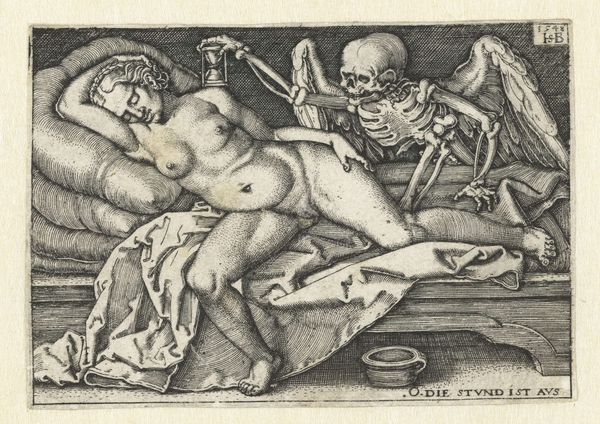
Dimensions: height 40 mm, width 117 mm, height 243 mm, width 360 mm
Copyright: Rijks Museum: Open Domain
Curator: Looking at this, I am immediately struck by its whimsical darkness. Gesina ter Borch offers us a slice of life...or death, really, in her "Dance of Death (left half)", likely rendered somewhere between 1643 and 1687. What are your initial thoughts on the artwork? Editor: I’m drawn to the toned paper itself. Think of the physical act: the paper ground, the pen in hand, the artist’s wrist moving across the surface. You get a palpable sense of creation here, especially seeing this sort of layered, sketchy effect built in ink. Curator: Yes, precisely! It feels incredibly personal, doesn’t it? As if we are peeking into her sketchbook. I see echoes of late Mannerism here in the elongated figures, the almost playful arrangement of death dancing with these figures of nobility...It’s macabre, yes, but also oddly joyful. Editor: And it challenges our notions of "high art," doesn't it? Ter Borch transforms allegory—something typically rendered on a grand scale—into an intimate, almost furtive study. What about the economic and social conditions, what material constraints might have led Ter Borch to work so intimately? Was it simply cheaper? More immediate? Curator: An intriguing thought! Perhaps this intimacy also points towards a deep internal wrestling with mortality, something incredibly relevant amidst the plagues of that era. This ‘dance’ with death feels both universal and deeply personal. You have figures of importance - nobles, perhaps even royalty - intertwined with the grim reapers. There is a sense that regardless of status, mortality comes for us all. It gives pause, doesn't it? Editor: Absolutely, this drawing really underscores how art emerges from—and comments on—the materials at hand and the times in which we live. From the societal fears around life expectancy to the availability of simple paper and ink, it’s a material and social reflection. It makes you consider art's very tangible roots. Curator: Thinking of it now, one is reminded of how our inevitable ending is as essential to life as its starting point. What starts ornate will decay over time. Ter Borch's choice in material only enriches this reading more. Editor: It’s funny to consider how seemingly disparate elements—a toned sheet of paper and societal anxieties surrounding death—combine here to create something both so revealing and poignant. What lasting impact this one small act can provide to its viewer hundreds of years later!
Comments
No comments
Be the first to comment and join the conversation on the ultimate creative platform.
